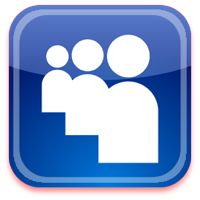That’s a pretty harsh assessment that comes from the recent report of the 21st Century Literacy Summit – A Global Imperative. It goes on to say,
“Students come to school equipped to learn on many levels … but today’s curricula do not meet their needs… Schools do their students a disservice when they fail to teach literacy in the expressive new language that their students have already begun to use before they even arrive.” Download report (808 kb) pdf
Loads of teachers are working hard to create classrooms where students can take on the challenge of intellectual work – rather than just look for the right answer. They want school to be more rigorous, relevant and engaging. Places that give students opportunities to learn how professionals approach their work – scientist, engineer, artist, historian, mathematician, writer, and musician.
But I couldn’t help but think that while teachers are fighting for market share of their students’ brains, Rupert Murdoch announced his purchase of MySpace.com. This two year-old site functions as a student lounge for an estimated 33 million young people. It has more page views than Google and is currently adding 4 million teens a month to its ranks of “addicts.” MySpace engages students because they are both the audience and the content providers. As one educator recently said to me, “my nephew loves MySpace. He posts his original music and artwork there and then uses the feedback from his viewers to improve his work.” All the strategies we’d love to use in our classrooms can potentially flourish there – cooperative learning, peer evaluation, differentiation, multiple learning styles, self-directed learning.
Students are used to controlling the flow of information in their lives. They can get what they want, when they want to – store it, catalogue it, alter it, and share it. What “market share” of student attention do our schools still retain? When students walked in the door this fall, did they feel more like they’re going back in time or into their futures?
We need to bring this movement into our schools rather than compete with it for the attention of our students. After all, I’ll bet our students are more concerned about their MySpace rankings than their school’s “adequate yearly progress” on state tests.



Cooperative learning, peer evaluation, differentiation, multiple learning styles, self-directed learning…all of this is what educators want to happen in a classroom but the big question is HOW? Schools are challanged with keeping up with an electronic world that constantly changes without the funds.
The article calls educating a competition for studnet attention and it is true. Teachers are turning ten trying to do that with limited resources. The public is fast to point the finger at education but those other fingers are pointing right back at them. It takes a society to make teaching a real thing. As the author of Possible Lives stated in an interview,”Without Teachers,culture collapses”
Juanita,
I hear your frustration. You hit the nail on the head with your question of “HOW?”
While this post was written nearly 5 years ago (before the current budget crisis), it certainly applies today. Although NCLB rightly focuses on student performance -its so with a system of measurement that is crude at best and clearly does not trust teachers. Innovative teachers are forced into scripted instructional models and mind-numbing test prep. And through it all, business experts point accusing fingers at teachers while patiently waiting to privatize public education.
In education we tend to oversteer. Most recently from acceptance of the “bell curve” to accountability. I hope someday soon we realize that school are not factories – but learning environments that should be fostering creativity and independence.